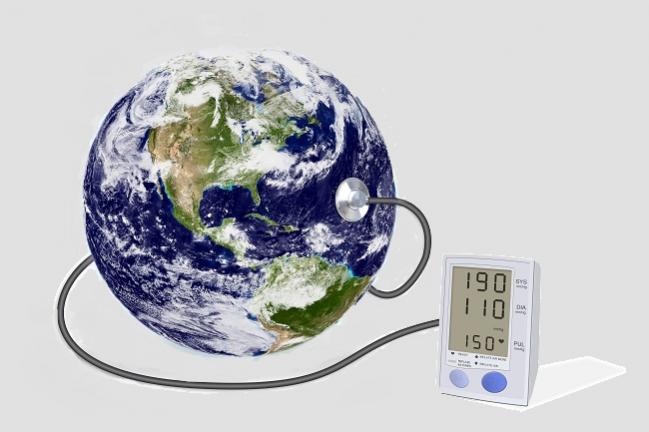Global Burden of Elevated Systolic Blood Pressure on the Rise
There are 3.5 billion adults with systolic BP of 110 to 115 mm Hg, a level researchers say is associated with increased morbidity and mortality.

The estimated number of individuals with hypertension increased significantly between 1990 and 2015, with approximately 874 million adults now having systolic blood pressures greater than 140 mm Hg, a new analysis shows. Additionally, there are approximately 3.5 million adults worldwide with a systolic blood pressure of at least 110 to 115 mm Hg, report researchers.
“We found that the age-standardized rate is going up, which means that blood pressures are rising even if you account for population growth and changes in age structures of populations,” Gregory Roth, MD (University of Washington, Seattle), one of the study investigators, told TCTMD. “In other words, it’s not just the aging world.”
The new research, which was published today in JAMA, is part of the Global Burden of Disease, Injuries, and Risk Factor study, a longstanding effort that aims to produce comparable and consistent measures of health. Roth explained the international study tracks 300 different disease categories, with systolic blood pressure one of 79 modifiable disease risk factors studied.
Between 1990 and 2015, the rate of individuals with systolic blood pressure of at least 110 to 115 mm Hg increased from 73,119 to 81,373 per 100,000 people. The rate of those with systolic blood pressure greater than 140 mm Hg increased from 17,307 to 20,526 per 100,000.
Regarding the impact on mortality, the estimated number of annual deaths linked with systolic blood pressure of at least 110 to 115 mm Hg rose from 135.6 to 145.2 deaths per 100,000 individuals between 1990 and 2015. The number of deaths associated with hypertension also went up, from 97.9 to 106.3 deaths per 100,000 people.
The researchers said that compared with all the other specific risks quantified in the 2015 study, systolic blood pressure of at least 110 to 115 mm Hg was the leading contributor to preventable death. The three leading causes of death related to systolic blood pressure were ischemic heart disease, hemorrhagic stroke, and ischemic stroke.
“There is very strong evidence from prospective cohort studies that the risk of death begins to increase above 110 mm Hg,” said Roth, explaining why they selected their targets for analysis. “However, there is only limited evidence that giving blood pressure-lowering medications below 140 mm Hg has any benefit. The Global Burden of Disease study produces estimates of health lost relative to a theoretical healthy state. We didn’t want to limit our estimates just to the health that can be gained by delivering blood pressure-lowering medications.”
Worldwide Heterogeneity
In 2015, the projected loss of disability-adjusted life-years (DALYs) related to systolic blood pressure of at least 110 to 115 mm Hg was 211 million, up from 148 million in 1990. Hypertension was projected to account for 143 million DALYs lost in 2015, which was up from 95 million in 1990.
“The amount of health lost due to elevated systolic blood pressure varied dramatically in different parts of the world, reaching almost 20% of lost health in some regions of Eastern Europe and Central Asia,” said Roth. “That means that where you live has a big impact on how much systolic blood pressure is contributing to the health of your population.”
China, India, Russia, Indonesia, and the US together accounted for more than 50% of DALYs associated with systolic blood pressure of at least 110 to 115 mm Hg.
Roth said than nonpharmacological interventions delivered much earlier in life, such as a healthy lifestyle and weight management, might be necessary to achieve the healthiest possible blood pressure. Based on the SPRINT trial, which included individuals with cardiovascular disease and those at high risk for cardiovascular events, there is evidence of benefit when achieving a blood pressure lower than the currently recommended targets. “We do know that blood pressure-lowering medications can play a role down to 120 mm Hg, but for many people in that range we would encourage healthy lifestyle choices, such as lowering the amount of salt in the diet or maintaining a healthy weight,” he said.
Lifelong Increases in Blood Pressure Not Inevitable
In an editorial, Mark Huffman, MD, and Donald Lloyd-Jones, MD (Northwestern University Feinberg School of Medicine, Chicago, IL), state that estimating the impact of a single risk factor has helped define high-burden regions throughout the world, which can be useful for stakeholders and can influence health policy and shift priorities.
Lifelong increases in blood pressure are not an inevitable consequence of aging, they say, and based on the new data, “broad population-level and high-risk clinical strategies are needed to reduce the burden of elevated systolic blood pressure.” They point out that exposure to increasing blood pressure levels over time, even in the prehypertensive state, can result in myocardial and vascular damage.
“Preventing the onset of clinical hypertension (ie, primary prevention) and blunting or abolishing the rise in systolic blood pressure from 110 mm Hg through prehypertensive levels to 140 mm Hg or higher is imperative to prevent premature death and disability from cardiovascular diseases,” write Huffman and Lloyd-Jones.
Michael O’Riordan is the Managing Editor for TCTMD. He completed his undergraduate degrees at Queen’s University in Kingston, ON, and…
Read Full BioSources
Forouzanfar M, Liu P, Roth GA, et al. Global burden of hypertension and systolic blood pressure of at least 110 to 115 mm Hg, 1990-2015. JAMA. 2017;317:165-182.
Huffman MD, Lloyd-Jones DM. Global burden of raised blood pressure. JAMA. 2017;317:142-143.
Disclosures
- Roth and Lloyd-Jones report no conflicts of interest.
- Huffman reports grants from the World Heart Federation and JR Alberts Foundation and travel support from the American Heart Association.


Comments